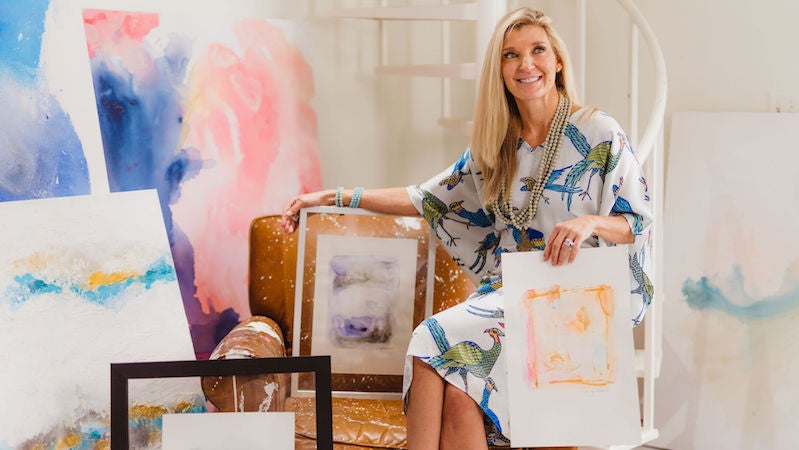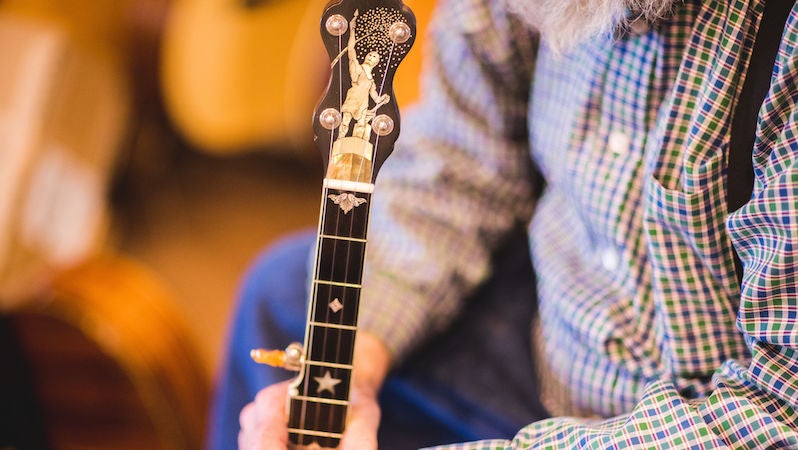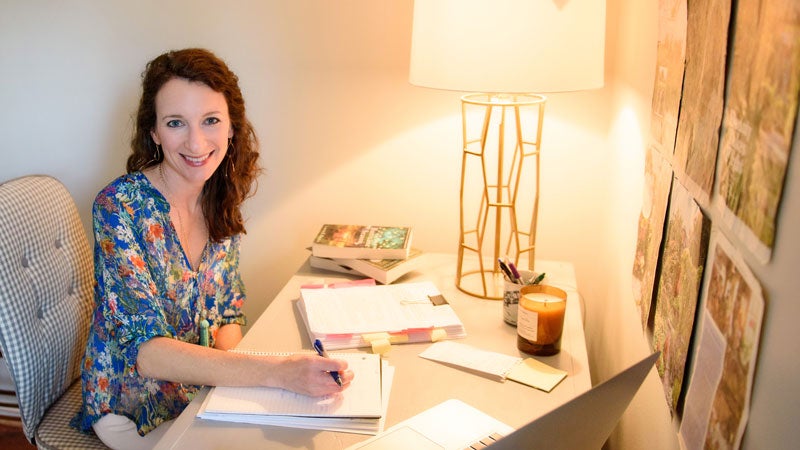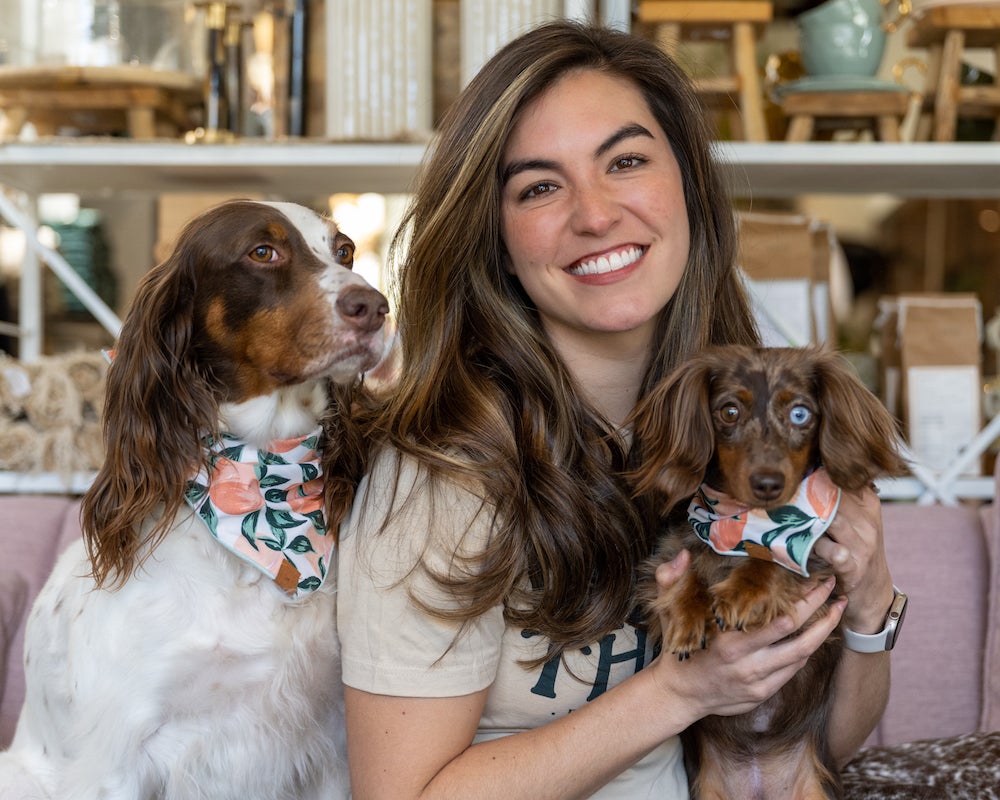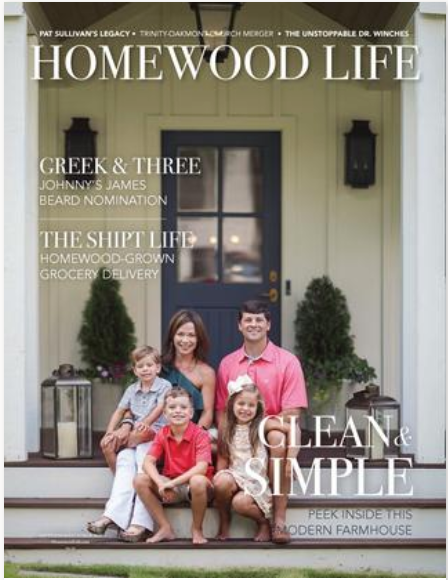By Elizabeth Sturgeon
Photos by Kathryn Bell
Carrie Pittman Hill snatches her nail polish, a spatula and a bag of flour. She pulls supplies from underneath her bed—canvases, paints, and brushes, all waiting patiently for her—and begins to work. She combines grit, color and whimsy with a misfit assortment of household objects that become the alphabet of her new language: abstract painting.
Eight years ago, Carrie discovered this kind of creative surge and spent all her nights making art. Ever since, she’s grown her work into a distinguished portfolio of expressionistic acrylic and watercolor paintings, defined by striking textures and a near-neon color palette.
Carrie never thought she would find a career in art, instead turning to business and finance. But at the same time, she’s not surprised at where’s she’s found her passion. “I created all my childhood,” she says. “I painted acorns and, and when I was at home with babysitter, I would spray them with my mom’s perfume and go door to door selling them as potpourri. Everyone has acorns and leaves in their backyards, but not many of them are pastel colored.”
With her desire to beautify the things around her was also a natural inclination to sell what she made. Carrie studied business communications and developed her career in corporate business, taking her very first position in financial planning. After a few years there, she moved on to other positions in pharmaceutical sales, boutique management and catering.
Carrie knew, in all of these different roles, that a desk job wasn’t for her though. “I was always thinking about ways to get out. I felt boxed in,” she says. And as she switched roles, she eventually landed back in financial planning at her family’s business. She was part of the third generation of Pittmans working at the company and was the only woman—and she was good at her job.
But in 2014, in the middle of a heartbreak, Carrie found the most joy in the painting frenzy that was her free time. “Every day, I came back from work and painted,” she says. “It’s the only thing that made me feel better.”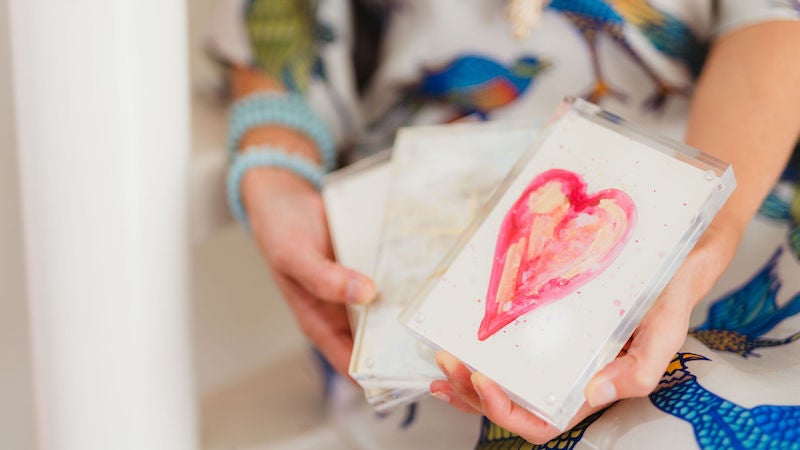
There’s an energy to her work—magentas and mustards melt together, and cooler colors drip down, or burst across the canvas. “I just really love the texture and mixing colors and really letting color create its own movement,” she says.
As Carrie made more pieces, she started sharing them with some of her friends, which then led to several commissions and small art shows. She began doubling as a financial planner and an artist, and lunch breaks became trips to Michael’s and painting deliveries. “I knew I either had to stick with the insurance business and really be a part of the third-generation legacy, or I had to be true to myself and paint,” Carrie says. “And I knew I couldn’t give the art up. It was a huge leap of faith.”
She’s now expanded her portfolio, put her designs on pillows, wallpapers, bags and curtains, and has shipped to almost every state and around the world. Her house in Homewood—which is also her studio—even marks the beginning of her jump into a full-time art career.
When she’s working on a commissioned piece, Carrie captures a feeling or essence in her work. “People are good at describing how they want it to feel—bright, powerful, serene,” she says. “I have to try to translate what they’re saying into what that looks like on canvas. I get to know the client, their vibe, and their fabrics. It gets really personal.”
She then combines those requests with her style that’s impulsive yet layered. “I just start with color and go from there,” she says. “I let it dry and layer it with color, over and over. Most of my paintings have six or more layers each.” Her work can take on a peaceful, slow-moving look, or it can dance with an energized, warm glow.
You can also find a little gold throughout most of her pieces. “I think the gold symbolizes God and hope. It’s an elevated color,” she says. A soft gold especially runs through her smaller canvases, crosses and other gifts, or in the “hidden crosses” people often request in their commissions.
Her fluid style pairs well with her business background too. Leave it to Carrie to create a price-per-square-inch formula for her work, and she’s often working to expand her breadth while also making pieces that are more affordable. She’s hoping to make more prints of her work, or even incorporate her designs in a dinnerware line of her own.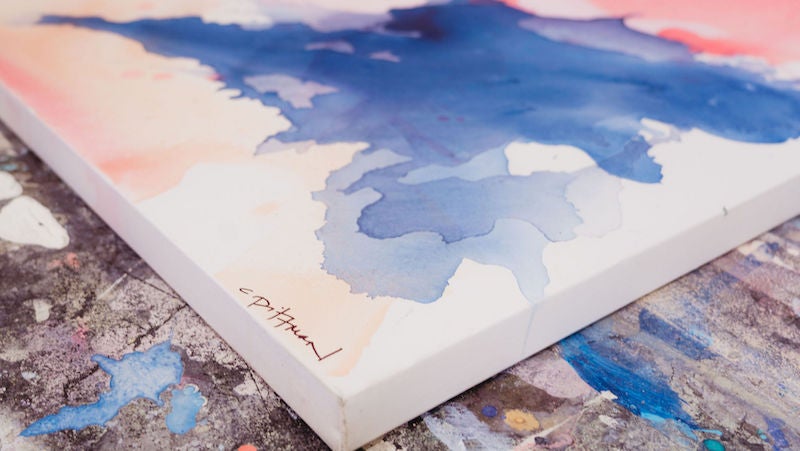
At the end of the day, she wants to keep mastering the language she’s developed because as she continues to paint, she’s learning how so many other people understand it who find beauty and stories in her work. “You can look at a painting, and it can really speak to you,” she says. “It can remind you of a place, a person, a song. It can bring beauty to a space that’s not beautiful.”
Sometimes, people come to Carrie with more than a few color swatches and trust her to capture their family or a memory through her work. Her abstract strokes become portraiture in a way she never imagined. “It’s very humbling that I’m even an artist at all. If my paintings bring any sense of hope, or peace, or excitement, it’s so rewarding. That’s what I hope to bring into people’s homes.”
Where to Find Carrie’s Art
You can find Carrie’s work in Thomas Andrew Art in downtown Homewood. She also takes her work to shows in Birmingham, Nashville and Atlanta. Plus, if you’re a regular HGTV viewer, be on the lookout for one of Carrie’s paintings on screen! Learn more at carriepittman.com or follow her @carriepittmanart.
Commissioned Work
Right now, Carrie’s main focus is on commissioned pieces, which is also how her art business first began. Virginia Volman, a Birmingham and Fairhope interior designer, stumbled upon one of Carrie’s early pieces that she’d given to a friend, and she asked her for a commission. That piece then turned into a small art show Virginia held at her house. Carrie pulled a couple of all-nighters to bring in nearly 50 pieces to sell even though she was so hesitant to share a talent that was something comforting and vulnerable. “I didn’t expect anyone to pay attention to it,” Carrie says. “But I felt encouraged.”

